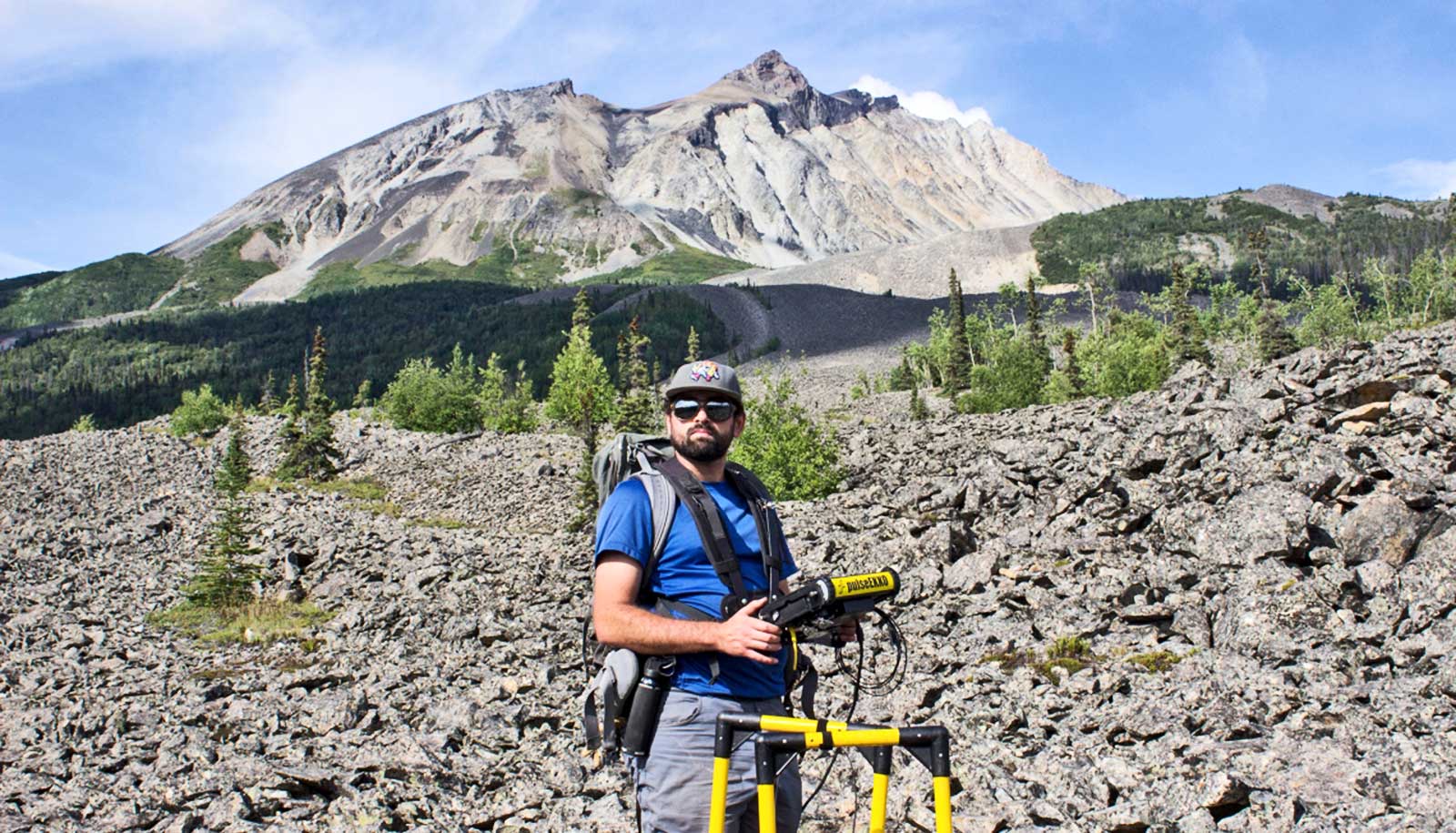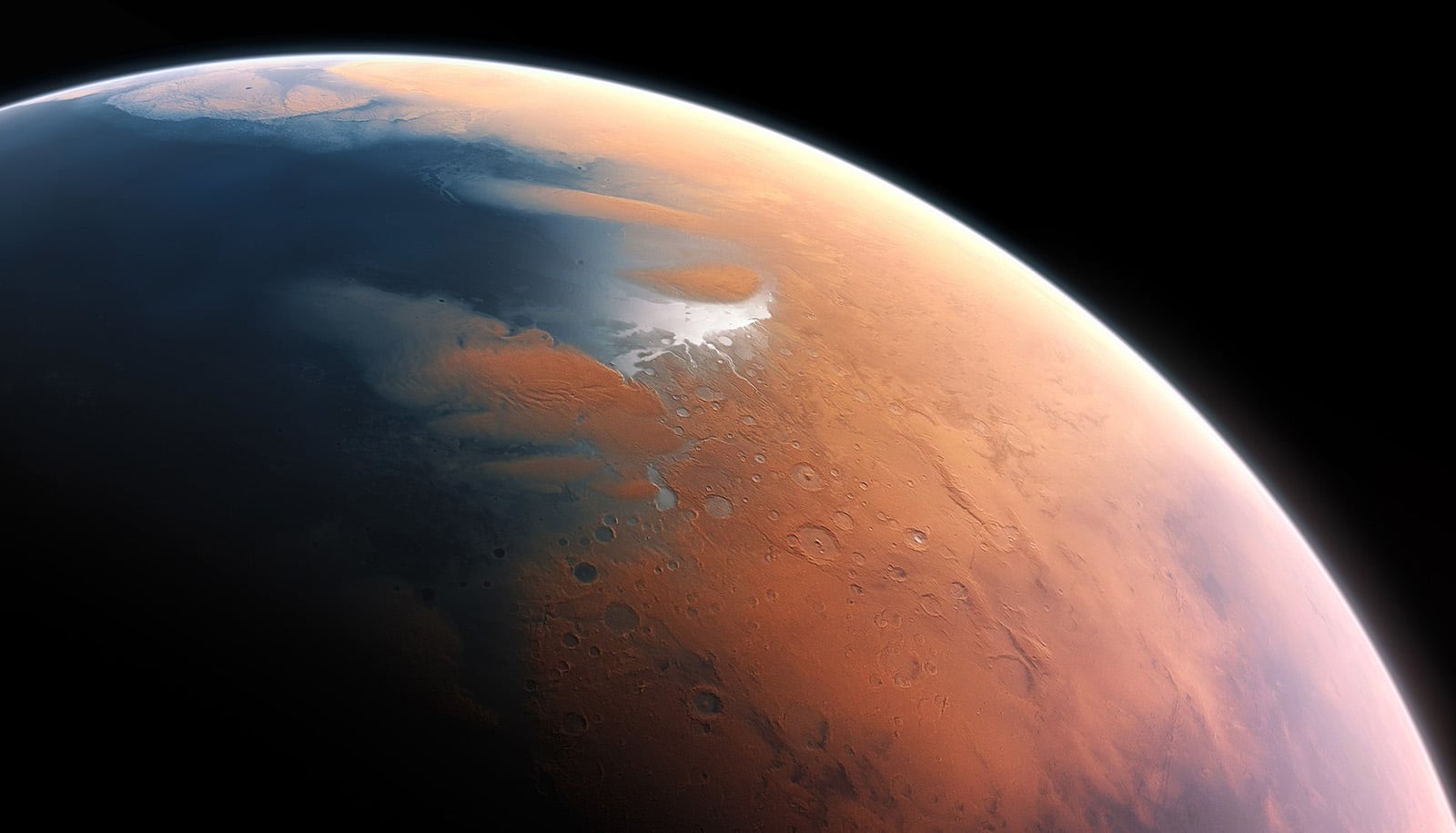Researchers have developed a new method for analyzing rock glaciers, which could help scientists better understand these “hidden giants” on Earth and Mars.
Standing on a rock glacier is what Tyler Meng imagines it would be like to stand on the surface of Mars. The glacier’s barren and wrinkled landscape looks like Silly Putty that’s drooped under gravity’s pull, offering few clues that a frozen, debris-laden giant lurks beneath the surface.
Rock glaciers are so named because unlike pure ice glaciers, they are a mix of frozen water, sand, and rocks. They are generally found at the base of steep mountainsides or cliffs that have slowly dropped rock debris, which then mixes with glacier ice and refrozen snowmelt. Rock glaciers also exist on Mars.
Meng, who is pursuing a doctoral degree in planetary science at the University of Arizona, with a minor in geosciences, is lead author of a study in the Journal of Glaciology that describes a new method to determine rock glaciers’ ice thickness and the ratio of ice to debris, allowing for more precise measurements of these glaciers than previously possible.
Meng and his adviser and coauthor Jack Holt, a planetary sciences and geosciences professor, used this information to create maps of four rock glaciers in Colorado, Wyoming, and Alaska.
Their work, and future work that uses this method, will allow scientists to better understand water resources on both Earth and Mars, as well as how resilient this type of buried ice will be to the changing climate on both planets.
More than ice
Rock glaciers are hidden and insulated by debris on top of ice, and their movement is affected by the rocks trapped inside of them.
“You can think of the rocks like an insulating blanket,” Meng says. “Beyond a certain thickness, insulation basically turns off the melting, allowing for the ice to be preserved and slowly move or flow down a valley at elevations and temperatures where clean ice may be completely melted.”
Both pure ice glaciers and rock glaciers can move across landscapes—very slowly. However, the debris in rock glaciers causes them to flow even more slowly than ice glaciers, as the inclusion of rocks makes them much stiffer. They’re also typically smaller and thinner than clean ice glaciers, measuring just a couple miles in length, a few hundred or thousand feet wide and between 50 and 200 feet thick. Ice glaciers, in contrast, can be many miles in length and thousands of feet thick.
To collect the information needed to map and characterize these hidden giants, Meng, Holt, other students, and their collaborators hiked rugged mountain terrain in the western US, lugging computers, battery packs, and radar antennas on their backs. They navigated steep landscapes with loose rocks ranging in size from grains of sand to houses.
“Standing on a debris-covered glacier is pretty surreal, because it’s in this barren area on a mountainside, and each rock glacier seems to have its own personality,” Meng says. “They each have a slightly different type of bedrock supplying debris, and the valley geometry dictates its shape and appearance.”
Using two different antenna configurations, the researchers used ground-penetrating radar to measure both the radar wave speed and the angle at which the wave was reflected from the subsurface. In the same way that humans have two eyes to see in three dimensions, two antenna configurations allowed the researchers to better calculate the dimensions of the rock glacier. They also estimated the ratio of ice to rock at each survey location using radar wave velocity.
“In the process, we made the most precise estimates of rock glacier geometry and composition to date,” Meng says.
From Earth to Mars
Understanding rock glaciers on Earth is important because they are essentially water reservoirs, Meng says.
“Our research gives us a better idea of the total water budget in mountainous regions, where major rivers have headwaters,” he says. “Snow is a year-to-year accumulation that covers an entire landscape, whereas rock glaciers are a more localized but permanent water reservoir that actually stores water for what could be hundreds to a few thousand years.”
The researchers are continuing their analysis to understand signs of past climate change in rock glaciers and how these glaciers might have evolved through past climate changes.
“By having a map of the debris thickness and ice concentration, we can essentially characterize the ability of rock glaciers to withstand effects of a warming climate compared to clean ice glaciers,” Meng says.
Other scientists also recognized rock glaciers on Mars by their wrinkled putty-like flow pattern, even before radar data detected them.
Martian rock glaciers are still not well understood, Meng says, but it is known that they are typically found between 30 and 60 degrees latitude in both of the planet’s hemispheres and are much older than the Martian polar ice.
“These Martian rock glaciers are potential targets for water resources on Mars, too, because they’re actually really large compared to the ones on Earth, like hundreds of meters thick,” Meng says. “They’re also more accessible than polar ice because spacecraft wouldn’t have to change their orbits as much as they would if they were to land on a pole, which requires a lot more fuel to reach.”
One of the big challenges for scientists is determining the thickness of the surface rock covering the glaciers on Mars. If there is 30 feet of rock and debris on rugged Martian terrain, then it might not be worth the trouble for astronauts to attempt to access the ice for water resources, Meng says.
“Our goal is to use these rock glaciers on Earth as an analog for processes on Mars,” Meng says. “By mapping the patterns of debris thickness on Earth, we’re trying to understand how that debris thickness may also vary on Mars. Also, by learning about the differences in flow parameters between clean ice and debris-rich ice, that will help simulations for the Martian case as well.”
Moving forward, Holt’s research group is continuing to make similar measurements using surface-based radar while collecting new data using drones. This drone-based data collection will help the group to gain a more complete understanding of rock glacier flow and subsurface characteristics, while also testing new geophysical methods that may be used in future exploration of Earth and Mars.
Source: University of Arizona



